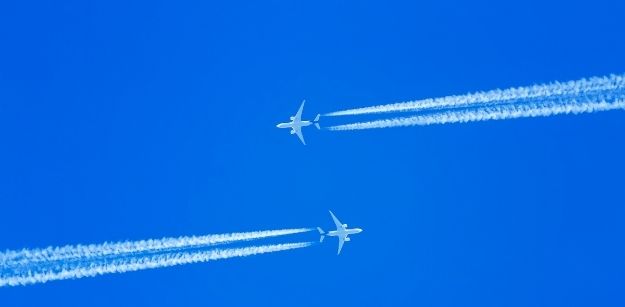RVSM stands for Reduced Vertical Separation Minimum. This system of flying planes was introduced around early 2000. Prior to the introduction of RVSM, planes used to fly using the CVSM system. Planes that flew at an altitude between FL 290 and FL 410 maintained a 2000ft space between them. The advancement of technology and innovation has increased the production of planes and airports around the world. The increase in planes has subsequently led to an increase in travel by planes.


As a result of this advancement, more planes are flown in the air at any given time. The increasing number of planes in the air means that they have to squeeze in the available air space. This concept necessitated the creation of RVSM.
In this system, planes that fly at an altitude between FL 290 and FL 410 maintain a vertical space of 1000ft. This means that more planes can fly in the air at any given time.
Therefore, pilots need to be aware of this new system and familiarize themselves with it. Flight authorities and companies are also required to be conversant with this system. RVSM training is important in ensuring that these persons are up to speed with this system.
This training is offered on various platforms and aviation institutions. We will look at the various components of RVSM training.
What Are the Requirements for Operating In RVSM?
The introduction of any new system calls for the purchase of new equipment. This concept is the same in RVSM implementation. There are various adjustments that are required in the plane to enable it to fly in RVSM airspace.
Here is the list of the various equipment needed for RVSM.
Two Independent Altitude Measuring Systems These instruments will enable the pilot to know the required altitude. Any deviations will be seen in this equipment.
One altimeter measures altitude based on atmospheric pressure. The other altimeter measures altitude based on the time it takes the radio signal to bounce back.
1. Altitude Reporting Transponder and Secondary Surveillance Radar
These instruments are the communication tool between the plane and the station on the ground. These stations are manned by controllers. The controllers receive information from the transponder about the altitude of the plane. This information is received by the surveillance radar.
This enables the controller to determine the difference in altitude between the two planes. Every plane that travels in RSVM needs a transponder.
2. AAS (Altitude Alert System)
An altitude Alert System is one of the most important equipment for planes that fly in RSVM. As the name suggests, this equipment alerts the pilot when the plane deviates from the recommended altitude.
Planes flying in RSVM have to maintain a difference of 1000ft in altitude. If a plane flies off track, the altitude alert system goes off and alerts the pilot.
RSVM Approval
In order for an aviation agency to be approved their staff has to be trained on how to operate the aforementioned equipment. The state in which the aviation authority is located has to ascertain a few requirements.
Here are the various requirements that warrant RSVM approval.
- The plane in question has to have capable vertical navigation performance as per the requirements.
- The aviation authority has adjusted its procedural operations to suit RSVM air space. These adjustments have to cater to repair and maintenance procedures.
- The flight crew procedures instituted by the aviation authority have to align with RSVM airspace requirements.
- Once these requirements are met, the aviation authority will receive approval to fly in RSVM airspace. This approval is global.
What is the Flight Crew Training In RSVM?
The flight crew is liable for the plane’s operation on route. This crew is trained to adjust to the various RSVM implementations.
The crew is trained to know the ATC phraseology and understand it. Air traffic control has several phrases it uses. The crew should be familiar with these phrases. They are also trained to cross-check to ensure all systems comply with air traffic control clearance. Another form of training for the crew is to ensure that they are familiar with the contingency procedures. This is like using the stand-by altimeter. Besides, they are also trained to visually perceive other crafts that might be flying within 1000ft of their plane.



